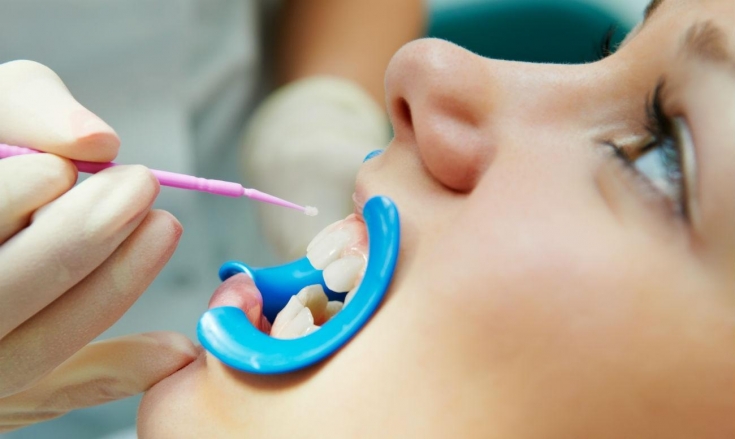If you want to strengthen your teeth, prevent the development of caries, and also eliminate the increased sensitivity of your teeth – pay attention to such a dental procedure as fluoridation. What does she represent? – As the name implies, this is the saturation of teeth with fluoride, which creates something like a protective shield that minimizes the harmful effects of an acidic environment, prevents the development of caries, and also reduces the sensitivity of teeth to cold or hot food. Experts recommend it even to small children. How often should this procedure be carried out? How is it made? These questions will be answered by estet-portal.com in this article.
Fluoridation: obvious benefits and safety concerns of the procedure
Fluorine – it is an important element for the health of our teeth. Its deficiency leads to the fact that tooth enamel becomes thinner, its fragility and porosity increase. As a result – microorganisms can appear in it, provoking the development of caries. And in general, the teeth become more brittle and fragile. Fluoridation, on the other hand, saturates the enamel with this missing element, strengthening it. This is an excellent prevention of various diseases of the oral cavity.
So, fluoridation is good for:
• prevention of caries;
• strengthening the enamel, preventing its destruction;
• reducing tooth sensitivity;
• prolonging the service life of different types of fillings.
At the same time, the fluoridation procedure is safe – it is even advised to pregnant women, for whom it is especially important to maintain healthy teeth during this period. The only contraindication can be considered cases when a person lives in a region where the water contains a large amount of fluorine. In this case, this procedure is categorically contraindicated – and is not needed by itself.
Fluoridation – This is a procedure for fluoride saturation of tooth enamel. It is useful for strengthening it, reducing sensitivity, preventing caries and enamel destruction, and also allows you to extend the life of the installed fillings.
Which method of fluorination is better to choose
There are four variations of this procedure, from which you can choose the one that suits you best in a particular case. Of course, you will choose together with your dentist, who will carry out fluoridation.
There are the following methods:
1. Use of fluorine varnish – is a product that combines sodium fluoride and cedar balm. One of the simplest and most affordable options. Such fluoridation is carried out in combination with the removal of stones and plaque. That is, first the teeth are cleaned from these formations, and then their surface is covered with fluoride varnish, dried with a stream of air. The disadvantage of this method is that it does not allow fluorine to penetrate deep into the enamel structure.
2. Express fluoridation – in this case, you will need to put on a special mouthguard with fluoride gel and keep it for ten to twenty minutes. The first procedure is usually carried out under the supervision of a doctor, and further ones can be done at home. Within one course, about 10-15 procedures will be needed.
3. Deep fluoridation – in this case, the teeth will first need to be mechanically cleaned, and then they are coated with a special composition with a high fluoride content. After that, the dentist performs a number of procedures, as a result of which fluorine particles penetrate directly into the pores of the enamel, filling them. This method allows you to well saturate the enamel with fluorine, and a second procedure may be needed no earlier than a year later.
4. Electrophoresis – Fluorine ions penetrate deep into the tooth tissue with the help of electrodes. It will take ten treatments to achieve the desired effect.
4. Electrophoresis – Fluorine ions penetrate deep into the tooth tissue with the help of electrodes. It will take ten treatments to achieve the desired effect.Deep fluoridation – in this case, the teeth will first need to be mechanically cleaned, and then they are coated with a special composition with a high fluoride content. After that, the dentist performs a number of procedures, as a result of which fluorine particles penetrate directly into the pores of the enamel, filling them. This method allows you to well saturate the enamel with fluorine, and a second procedure may be needed no earlier than a year later.
After that, the dentist performs a number of procedures, as a result of which fluorine particles penetrate directly into the pores of the enamel, filling them. This method allows you to well saturate the enamel with fluorine, and a second procedure may be needed no earlier than a year later. 






Add a comment